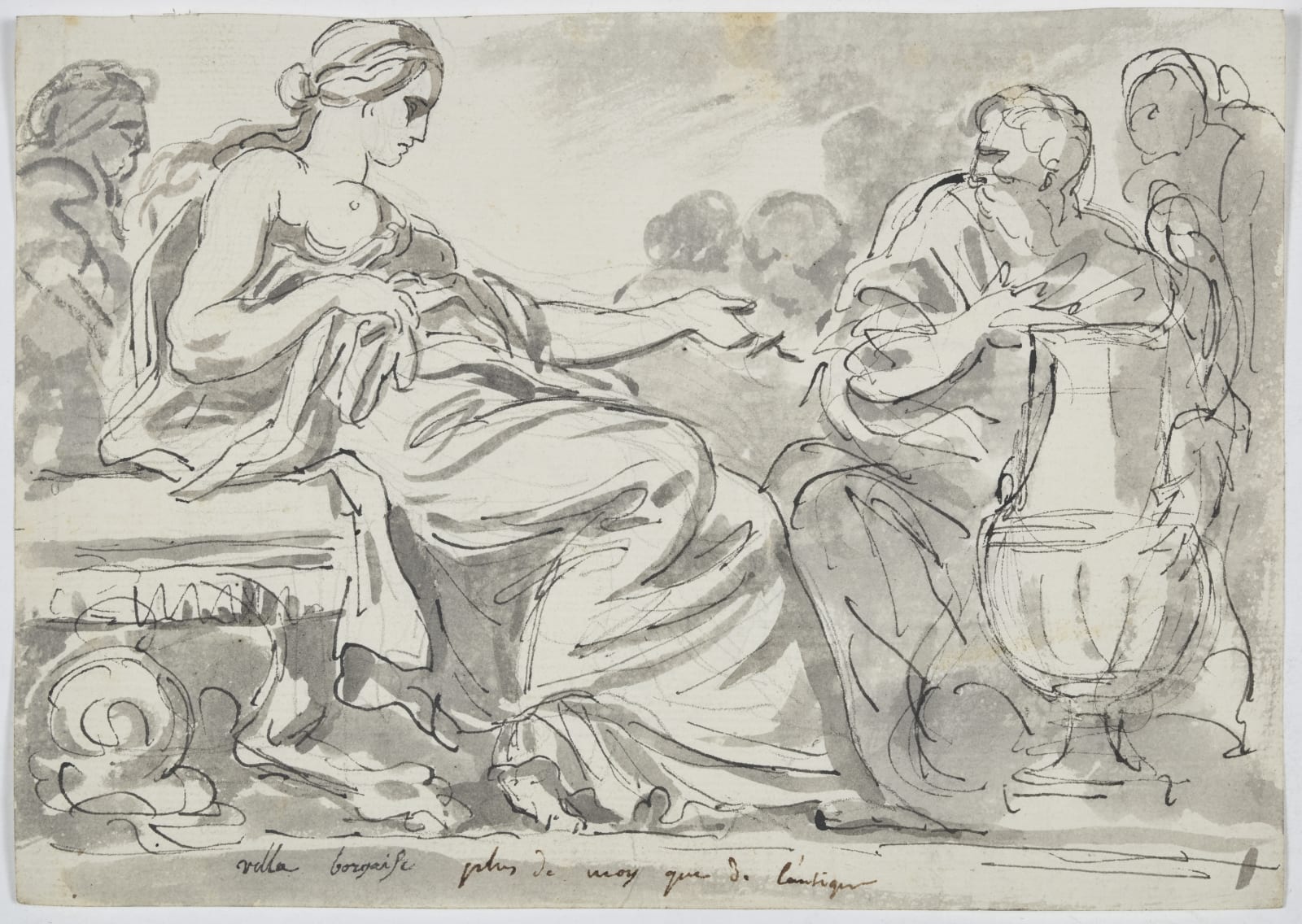 Reverse / verso
Reverse / verso
 Augustin Pajou by/ par Adélaîde Labillle-Guiard - Musée du Louvre - Paris France
Augustin Pajou by/ par Adélaîde Labillle-Guiard - Musée du Louvre - Paris France
Augustin Pajou French School, 1730-1809
14 x 19 cm
Further images
In this lively and fresh drawing, probably taken from one of the artist's notebooks, Pajou presents us with a composition freely inspired by antiquity, as a souvenir of a visit to the Villa Borghese. This evocation of the artist's Roman sojourn is made even more moving by a self-portrait sketch of the artist on the back of the sheet...
1. Augustin Pajou in Rome, the training of a great sculptor
The son of a journeyman woodcarver, Augustin Pajou entered the Royal Academy school at an early age, where he trained under Jean-Baptiste II Lemoyne (1704-1778). Laureat of the grand sculpture prize in 1748 (at the age of eighteen), he joined the Royal School for protected pupils, received an annuity from the King from 1751 onwards, and stayed at the Royal Academy in Rome from 1752 to 1756. These years in Rome were to have a decisive influence as they allowed him to study not only his art but also to receive a classical education which he had not had access to in his youth.
Back in Paris, he was received at the Royal Academy in 1759 and was finally accepted the following year. An extremely prolific and diverse artist, he was a sculptor, a decorator and a "bustier" creating terracotta or marble effigies of the great figures of his time.
Pajou's graphic work is also very rich. As Louis-Antoine Prat writes in "Le Dessin Français au XVIIIe siècle": "Pajou displays a particularly varied body of drawings, showing flexibility in his approach to antiquity and the masters [...]. He is certainly, among the draughtsmen-sculptors of the century, and one who was able to express himself in the greatest number of registers. »
2. A notebook sheet drawn on the motif
Pajou drew a lot during his stay in Rome. He produced very advanced compositions in red chalk, probably intended to be sent to the Marquis de Marigny as a testimony of his progress at the Academy. In his notebooks which have now been dismantled, he uses a more personal style, employing various techniques: black stone, pen, grey or brown wash. Pajou interprets both ancient art and scenes from everyday Roman life with an "astonishing elliptical speed". In this respect, our drawing can be compared, in terms of technique and size, to the "Cardinal Grand Pénitencier" now in the Metropolitan Museum of Art in New York (USA).
The autograph annotation 'villa Borgaise plus de moy que de l’ antique' gives us information about the place in which our drawing was conceived, although it is likely, as the artist indicates, that the antique bas-relief from which he drew his inspiration was heavily modified by his imagination. We have not been able to identify this bas-relief, as the Villa Borghese, built at the beginning of the seventeenth century in the middle of a large park on the Pincio hill in Rome, was redecorated from 1770 for Marcantonio IV Borghese.
A woman wrapped in a long tunic sits on the edge of a bed with a zoomorphic foot that evokes a lion's paw. She is pointing to a large urn being held up by a bearded old man crouching at her knees. Various characters are evoked in the background and complete the scene. In a surprising and unanatomical manner, the artist forcefully depicts the main character’s right breast outside her tunic, which perhaps justifies his comment!
3. A self-portrait of Pajou?
A surprise awaits us on the back of this sheet: the portrait of a man, very lightly sketched in graphite, in a front view, wearing a tricorne hat. The inclusion of different subjects drawn with different techniques on the same sheet is typical of an artist's notebook.
The features of this portrait are reminiscent of those of Augustin Pajou in a portrait of him by Adélaïde Labille-Guillard and this drawing could therefore be a self-portrait of the artist.
Main bibliographical reference :
Louis-Antoine Prat Le dessin Français au XVIIIe siècle – Paris 2017






